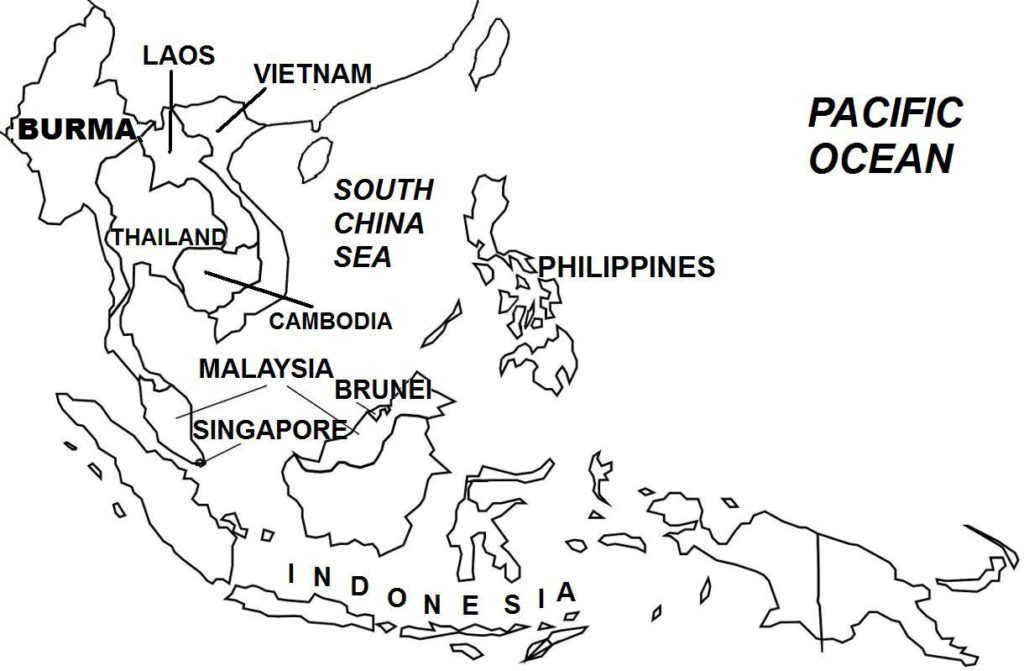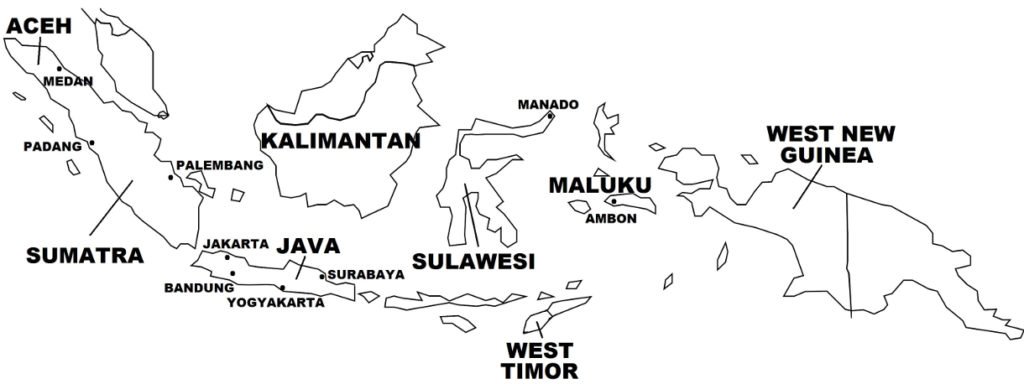
(Taken from Indonesian War of Independence – Wars of the 20th Century – Twenty Wars in Asia)
By late 1946, the British military had completed its mission in the Dutch East Indies (present-day Indonesia), that of repatriating Japanese forces to Japan and freeing the Allied prisoners of war following the end of World War II. By December 1946, British forces had departed from the islands, but not before setting up mediation talks between the Dutch government (which wanted to restore colonial rule) and the Indonesian revolutionaries (which desired independence), an initiative that led the two sides to agree to a ceasefire in October 1946. Earlier in June 1946, the Dutch government and representatives of ethnic and religious groups and the aristocracy from Sulawesi, Maluku, West New Guinea, and other eastern states met in South Sulawesi and agreed to form a federal-type government attached to the Netherlands. In talks held with the Indonesian revolutionaries, Dutch authorities presented a similar proposal which on November 12, 1946, produced the Linggadjati Agreement, where the two sides agreed to establish a federal system known as the United States of Indonesia (USI) by January 1, 1949. The Republic of Indonesia (consisting of Java, Madura, and Sumatra) would comprise one state under USI; in turn, USI and the Netherlands would form the Netherlands-Indonesian Union, with each polity being a fully sovereign state but under the symbolic authority of the Dutch monarchy.

This Agreement met strong opposition in the Indonesian government but eventually was ratified in February 1947 with strong pressure for its passage being exerted by Sukarno and Hatta. In December 1946 in South Sulawesi, Pemuda fighters who opposed the agreement restarted hostilities. Dutch forces, led by Captain Raymond Westerling, used brutal methods to quell the rebellion, killing some 3,000 Pemuda fighters. The Agreement also was resisted in the Netherlands, but in March 1947, a modified version was passed in the House of Representatives of the Dutch parliament.
Then in July 1947, declaring that the Indonesian government did not fully comply with the Agreement, Dutch forces launched Operation Product, a military offensive (which the Dutch government called a “police action”) in Java and Sumatra, seizing control of the vital economic regions, including sugar-producing areas in Java, and the rubber plantations in Medan, and petroleum and coal facilities in Palembang and Padang. Dutch ships also imposed a naval blockade of the ports, restricting the Indonesian Republic’s economic capacity.
In early 1947, acting on the diplomatic initiative of India and Australia, the United Nations Security Council (UNSC) released Resolution 27, which called on the two sides to stop fighting and enter into peaceful negotiations. On August 5, 1947, a ceasefire came into effect. A stipulation in Resolution 27 established the Committee of Good Office (CGO), a three-person body consisting of representatives, one named by the Netherlands, another by Indonesia, and a third, mutually agreed by both sides. In subsequent negotiations, the two sides agreed to form the Van Mook Line to delineate their respective areas of control which, because of the fighting, the Dutch-held territories in Java and Sumatra increased, while those of the Indonesian Republic decreased.
In January 1948, the two sides signed the Renville Agreement (named after the USS Renville, a U.S. Navy ship where the negotiations were held), which confirmed their respective territories in the Van Mook Line, and in the Dutch-held areas, a referendum would be held to decide whether the residents there wanted to be under Indonesian or Dutch control. Furthermore, in exchange for Indonesian forces withdrawing from Dutch-held areas as stipulated in the Van Mook Line, the Dutch Navy would end its blockade of the ports.
The Indonesian Republic, already weakened politically and militarily, was undermined further when its Islamic supporters in now Dutch-controlled West Java objected to the Renville Agreement and broke away to form Darul Islam (“Islamic State”), with the ultimate aim of turning Indonesia into an Islamic country. It opposed both the Indonesian government and Dutch colonial authorities. Darul Islam subsequently would be defeated only in 1962, some 13 years after the war had ended.
The Indonesian Republic also faced opposition from its other erstwhile allies, the communists (of the Indonesian Communist Party) and the socialists (of the Indonesian Socialist Party), who in September 1948, seceded and formed the “Indonesian Soviet Republic” in Madiun, East Java. Fighting in September-October and continuing until December 1948 eventually led to the Indonesian Republic quelling the Madiun uprising, with tens of thousands of communists killed or imprisoned and their leaders executed or forced into exile. Furthermore, the Indonesian Army itself was plagued with internal problems, because the government, suffering from acute financial difficulties and unable to pay the soldiers’ salaries, had disbanded a number of military units.
With the Indonesian revolutionary government experiencing internal problems, on December 19, 1948, Dutch forces launched Operation Kraai (“Operation Crow”), another “police action” on the contention that Indonesian guerillas had infiltrated the Van Mook Line and were carrying out subversive actions inside Dutch-held areas in violation of the Renville Agreement. Operation Kraai caught the revolutionaries off guard, forcing the Indonesian Army to retreat to the countryside to avoid being annihilated. As a result, Dutch forces captured large sections of Indonesian-held areas, including the Republic’s capital, Yogyakarta. Sukarno, Hatta, and other Republican leaders were captured without resistance and exiled, this action being deliberate on their part, as they believed that this latest aggression by the Dutch military would be condemned by the international community. Before allowing himself to be captured, Sukarno activated a clandestine “emergency government” in West Sumatra (to act as a caretaker government), which he had arranged beforehand as a contingency measure.
On December 24, 1948, the UNSC passed Resolution 63 which demanded the end of hostilities and the immediate release of Sukarno and other Indonesian leaders. Also by this time, the international media had taken hold of the conflict. The United States also exerted pressure on the Dutch government, threatening to cut off Marshall Plan aid for the Netherlands’ post-World War II reconstruction. Operation Kraii also generated division within USI as the Cabinets of Dutch-controlled states of East Indonesia and Pasundan resigned in protest of the Dutch military actions. As a result of these pressures, a ceasefire was agreed by the two sides, which came into effect in Java (on December 31, 1948) and Sumatra (on January 5, 1949).
